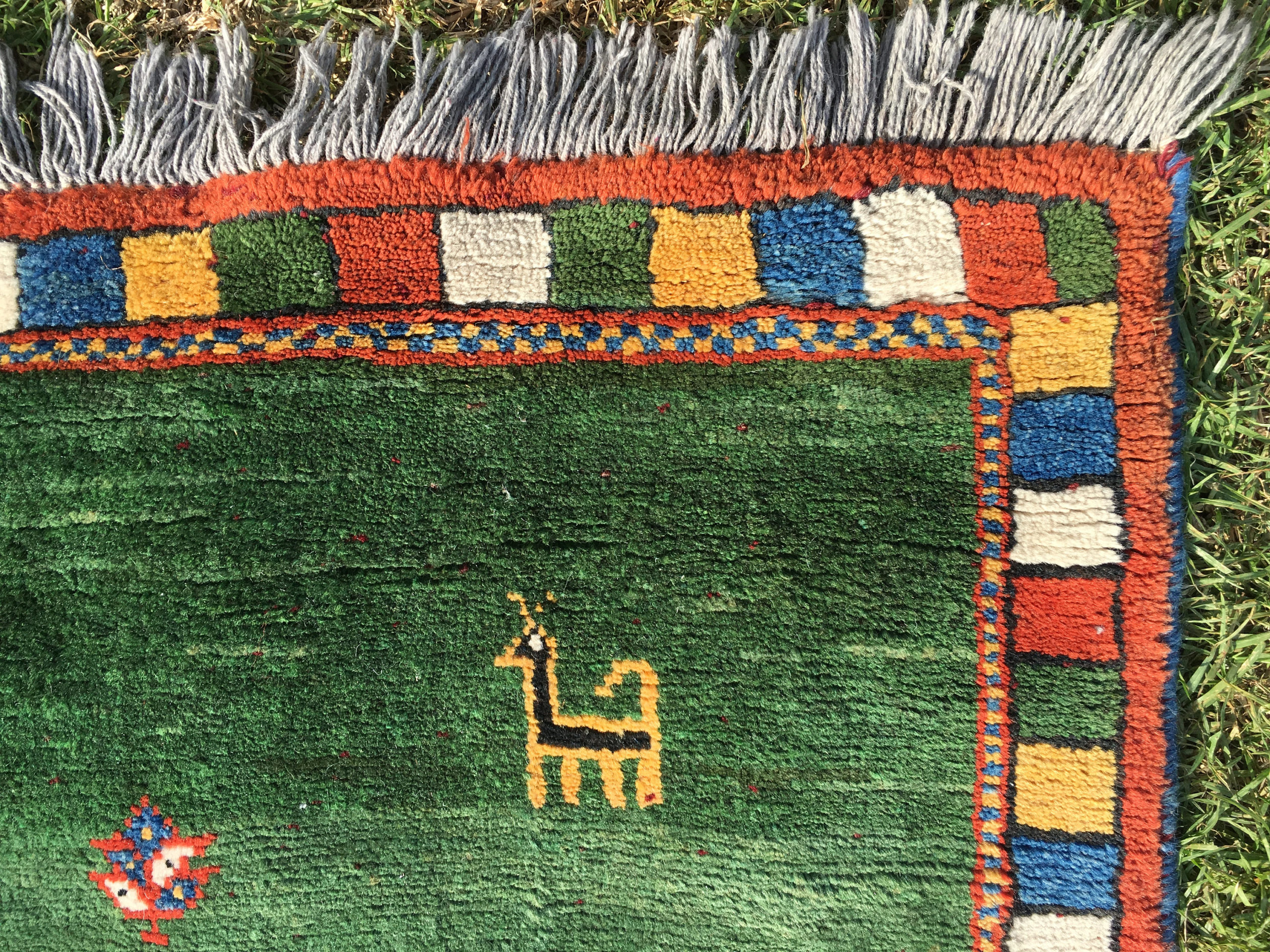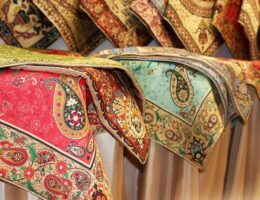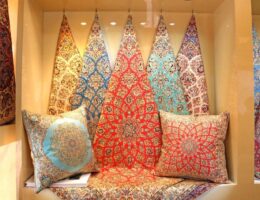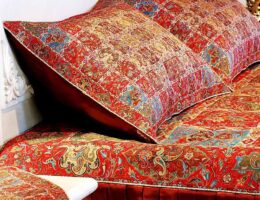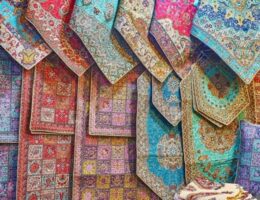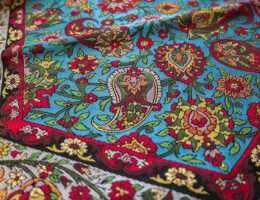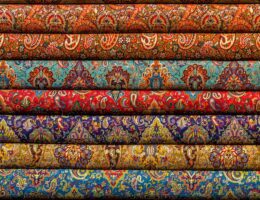IRAN ART EXHIBITION: GABBEH WEAVING HANDICRAFTS WERE INSPIRED BY THE NATURE
Gabbeh or gabba is a very delicate and beautiful kind of Persian rug. It is also called Gava or Khersak. Gabbeh or Khersak (which means bear cub) is a rug made of animal wool, which is usually woven in small size by Lor and Qashqai nomads in Iran. It literally means thick and rough and is a kind of carpet that has a huge and coarse texture. It was originally woven as an underlayment and rug.
Gabbeh weaving is common in most rural and nomadic areas. Among the important centers of Gabbeh weaving, we can mention Dou-gonbadan, Basht, Arro in Gachsaran city, Tal Gar, Cheshmeh Belqis, Deh Sheikh and Charam in Kohkilouyeh city, Boyer-ahmad and the rural areas of Bushehr province. Fars province has long been one of the most important and largest tribal centers. The Qashqai, Khamseh, Mamasani and Bakhtiari tribes were engaged in Gabbeh weaving.
Gabbeh has relatively long warp and weft, and more wefts are used in its texture, which has a significant effect on Gabbeh’s softness. The number of wefts of some gabbehs sometimes reaches from three to eight wefts per row and the height of the wefts sometimes reaches up to one centimeter. The average weight of Gabbeh is 3 kg per square meter.
In the past, Gabbehs were woven in simple designs and without any patterns. Weavers were often inspired by the environment and nature around them, and used their mental designs on Gabbeh. Because the weavers used to produce it for their personal needs and consumption, they mainly used their mental ideas and imaginations in its weaving, and sometimes they displayed their hopes and wishes on Gabbeh. So every Gabbeh has a story!
Gabbeh is an original hand-woven rug, and the patterns used in its texture distinguish it from other hand-woven carpets. As above mentioned most of Gabbeh’s designs are inspired by the nature around the weavers and based on their mentality and imaginations, which make Gabbeh special!
Gabbeh often have bright colors such as white, cream or milky in the background. The common feature of all Iranian Gabbehs is the traditional patterns.
In the past, the Qashqai and Lor tribes used to weave Gabbehs just for their personal use in the shape of carpets and rugs with wool yarn, but today Gabbehs have found many fans and are woven more than before. Gabbeh is mostly woven in the “Persian weaving” method, but the “Turkish weaving” method is rarely seen among the tribes and nomads, and the Gabbehs are woven on horizontal looms.
The best gabbehs are made of spring cut wool, which are dyed in a natural and herbal way. Gabbeh’s designs and patterns are entirely subjective and mostly contain the traditional geometric designs. In general, the main pattern of Persian Gabbehs is formed by a rectangular square and a row of rhombuses in the middle of which the vertices of each rhombus are connected to the vertices of other rhombuses and are called “kam” in the local term. In Gabbeh, geometric patterns are usually symmetrical.
IRAN ART EXHIBITION: The most common patterns of Iranian Ghabbehs have been developed over thousands of years. The geometric shapes and motifs of birds and animals in the background that may be composed of geometric shapes or flowers (something like Turkmen rugs) or it is like a Qashqai rugs, with one to three bergamot in each corner.
Gabbeh, which is also known as Khersak carpet, has long been the handiwork of nomads in different regions such as Bushehr, Shiraz, Khorasan, etc., and is in fact one of the main activities of these people. It should be noted that Fars province, with a 150-year history in the field of Gabbeh weaving, can be considered one of the pioneers of this art in Iran. This region includes tribes and nomads such as Qashqai, Khamseh, Mamasani and Bakhtiari tribes, and the Gabbehs of the Qashqai Turks of Fars is one of the best, so that it has a special reputation abroad.
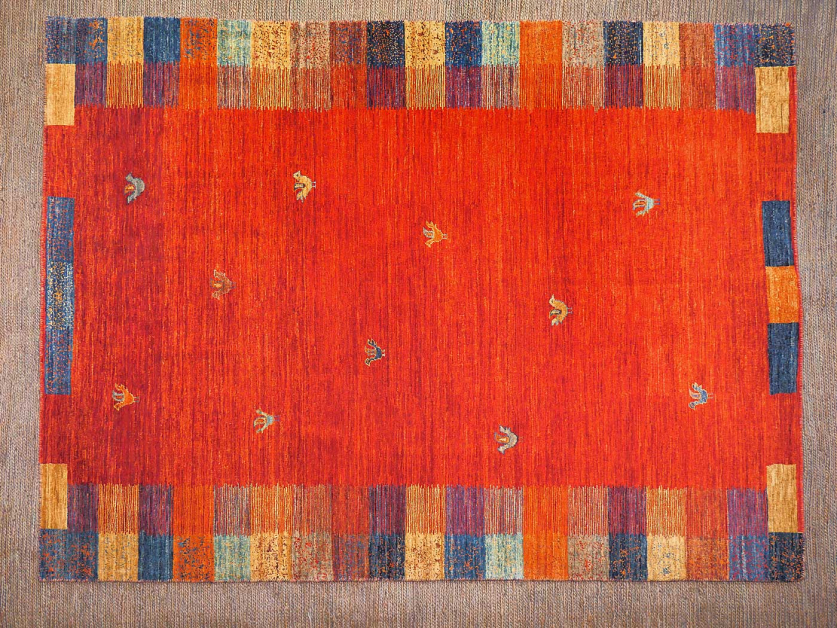
Gabbeh is one of the most popular handicrafts of Bushehr. They are common in almost all the villages, and even some of the cities of Bushehr. It may also be the first or second source of income of many families.
Gabbeh is similar to carpet, but they differ in motifs, size, colors and the number of its long and thick wefts. Motifs and patterns of Gabbeh are not the same as carpet. Gabbeh may do not have any margin, or may not be symmetrical. Many of its motifs look like paintings of children, quiet simple and primitive, but inspired by nature and surrounding.
IRAN ART EXHIBITION: Patterns of Gabbeh are created by the memory of their weavers. They are completely free to use any motif and they can place it anywhere they desire in the pattern. Another major difference between Gabbeh and carpet is the colors palette used in them. A major part of the Gabbeh are weaved using wools in their raw color. The Bushehr Gabbeh has plain backgrounds in white, cream, brown, black and grey, and the patterns are made in black, red, dark blue and other similar colors. The weavers are mostly women and girls who each have a special kind of motif on their minds and they skillfully weave them. In general, the common feature of the Gabbeh of Bushehr is the traditional patterns that have been evolved through generations and are artistically valuable.
The materials used in the process of Gabbeh weaving is produced from the wool of the sheeps that are bred locally. Today European countries and Arab States of Persian Gulf are two major buyers of Bushehr Gabbehs. Therefore, the makers have begun dying the wool by herbal pigments such as orange, blue, green and yellow to use them in the background. The motifs of these products are animals and doll-like. Some of the most famous patterns are Langer (anchor), Khesht (brick), Chang (harp), geometric forms, birds and animals, and kinds of paisley motifs. Bushehr Gabbehs are made in villages such as Shoul, Kamali, Bahmanyari, Mohammad Salehi, Sakhareh, Zakariyayi, Bamonir, Mal Mahmoud, Khalifehee, Otaybeh, Dehdaran and etc.
